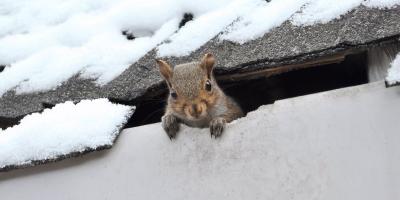Got Snow Fleas?

No one’s a fan of being labeled a flea. The word has too many connotations -- fleabag, flea trap, flea house -- none of them good. The word itself implies something to be avoided (that’s why we take such care to keep our pets free from fleas). But there’s at least “flea” you can’t evade... although, as luck would have it, it’s a flea only in name.
We’re talking about the humble snow flea.
Not only are snow fleas not parasites, they’re not technically fleas, either. In fact, they’re not even insects but a non-insect type of hexapod. Technically known as springtails, they’re often called “silverfish” when discovered inside and are an incredibly common pest that hides in plain site.
Different in More Than Just Name
Fleas of the kind you normally think of are parasites, which means they need an animal host in order to survive. Snow fleas need no such thing, but instead get their name on account of their jumping habits which, thanks to a special protein that acts like antifreeze in their bodies, are on spectacular display during the winter.
Their tiny bodies, frenetically jumping around, can be seen more clearly against a backdrop of pure driven snow, hence the name “snow fleas.”
Another difference is in the way they bounce from place to place. Fleas have large, powerful hind legs they use to propel themselves skyward, but snow fleas use an appendage more like a tail to fling themselves around.
Destroyers of Books, Carpets, and More
The good news is that snow fleas are relatively harmless to humans, so there’s nothing to worry about if you see any outdoors. The bad news, however, is they can wreak havoc on your stuff, which is why they’re a major problem when you discover them indoors.
Snow fleas will destroy your books and other old papers, wallpaper, carpets and clothes. Not by chewing those things up, mind you, but by staining them with their droppings.
They prefer to live in dark, damp places like basements and attics, garages and kitchens. They feed on dust, dry food and clutter, like paper, which can sometimes be abundant in those spaces traditionally used for storage.
Make Your Home Less Inviting
The best way to take care of indoor snow fleas is to make your house as inhospitable to them as possible. Start by sealing up all the dry food in your cupboards in airtight containers and cleaning up any food particles that may have collected along the shelves.
Dust your home often and don’t keep stuff with a lot of adhesive, like shipping boxes, lying around. If you’ve got particularly damp areas, you may want to consider adding a dehumidifier, which has the added benefit of keeping away other pests that are drawn to moisture, like woodlice, carpenter ants and termites.
If you do discover a major interior infestation, you may need to call a pest control professional to safely and completely eradicate the problem. That’s where we come in.
We have trained representatives standing by to answer your questions. Contact us today for a free quote to rid your home of pests.



